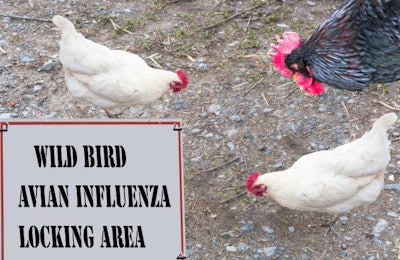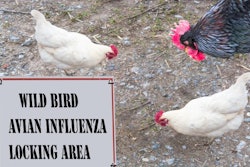
In the last two weeks, highly pathogenic avian influenza has returned to multiple locations in India and to Iran, as well as to Vietnam. There have also been new outbreaks in poultry in Taiwan and Bulgaria.
After a six-month absence, H5N1 HPAI has returned to India, according to recent reports from the Ministry of Agriculture and Farmers’ Welfare to the World Organisation for Animal Health (OIE). These reports outline a total of eight confirmed outbreaks of the disease in the poultry sector. All were in the Puri municipality in the state of Odisha in eastern India. Affecting a total of more than 26,000 birds, seven of the outbreaks were on farms, and one affected a backyard flock.
As a preventative measure, culling of 15,000 poultry has begun by the Indian authorities in the Munger district of the more northerly state of Bihar, according to NDTV two days ago. The report refers to the death of 3,000 hens at one village, and hundreds more at another location in the same area.
Indian’s agriculture ministry has lately confirmed to the OIE the presence of the H5N1 virus variant in wild birds in Munger and Patna in Bihar, as well as Nayagarh and Cuttack in the neighboring state of Odisha. The Patna outbreak involved six peafowl at a zoo, while a total of 46 house crows were found dead at the other locations in mid-December.
HPAI of the H5N8 subtype has been detected in three geographically distant regions of Iran since November of last year, according to official reports to the OIE.
Most recent avian influenza outbreaks, according to the Iran Veterinary Organization, were in poultry in Mazahdaran in the north of the country, near the Caspian Sea. Affected birds were 1,400 village ducks, and 35,660 broiler breeders at a farm, all of which were lost through mortality or culling.
Previously, the Organization had reported to the OIE that the same virus had been detected in a mixed backyard poultry flock in Tehran in late September of 2018, and at three locations in East Azarbayejan in the north-west of the country in mid-November. All 438 birds — chickens and turkeys— died or were destroyed to control the further spread of the disease, and the authorities were carrying out trace-back and forward activities in the surrounding areas.
Further HPAI outbreaks in Vietnam, Taiwan
H5N1 HPAI virus was detected in a flock of 215 village ducks in Vietnam in late December, according to the report of the country’s animal health agency to the OIE. The outbreak was in Dak Lak province, which is in central-southern Vietnam. According to the official report, the virus had been absent from the area since September of 2017.
Earlier in December, another village flock — this time in Quang Ninh in the far north-east of the country — tested positive for the H5N6 virus variant, according to an earlier report from the agriculture ministry in Hanoi. More than 700 of the 1,173-bird flock died in that outbreak.
With its first report to HPAI to the OIE from the Council of Agriculture in January of 2015, Taiwan’s battle to bring the disease under control in the poultry sector has now reached its fourth anniversary.
In mid-December, the H5N2 virus variant was confirmed in 1,202 meat geese at Taoyuan city and in 16 chickens in the county of Chiayi. Movement restrictions were imposed at both farms, surviving birds were culled, and cleaning and disinfection of the premises were carried out. Surveillance has been intensified in the surrounding areas for a period of three months.
Recent HPAI outbreak in Bulgaria
In mid-December, the H5N8 HPAI virus variant was detected in a backyard flock of around 400 birds in Vidin after 39 of the birds had died. The outbreak — in the far north-west of the country, bordering Serbia — was the first in the country for almost one month, according to the official report from the Ministry of Agriculture and Food to the OIE.
This outbreak brought the country’s total since October last year to 13, with more than 102,000 poultry lost directly to the disease. Previous outbreaks were in the central-southern regions of Plovdiv, Haskovo, Stara Zagora, and Jambol.
















